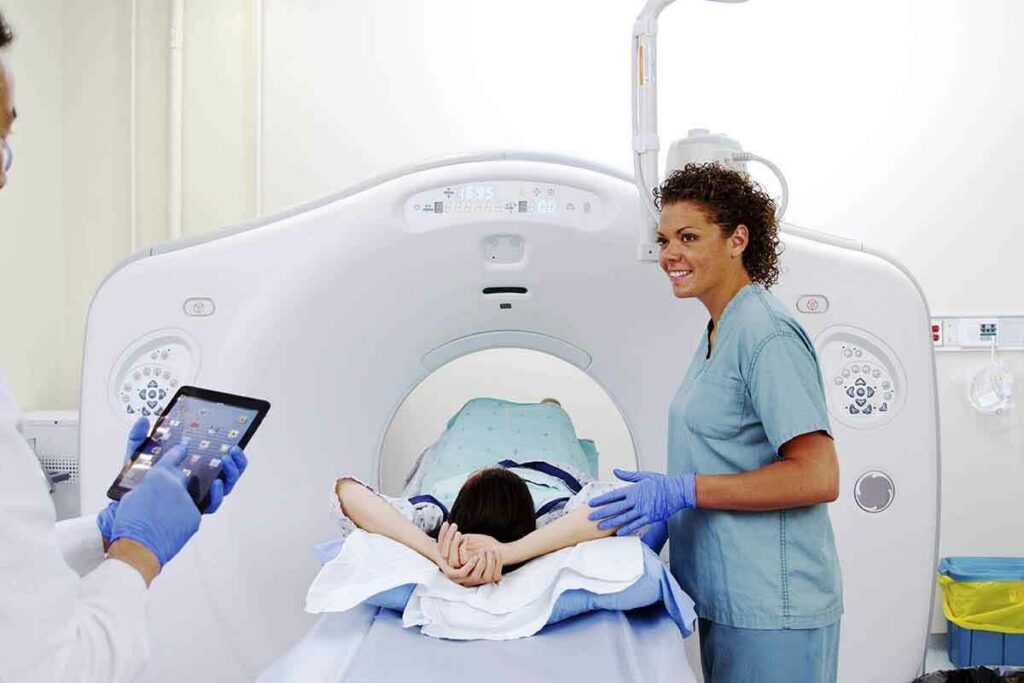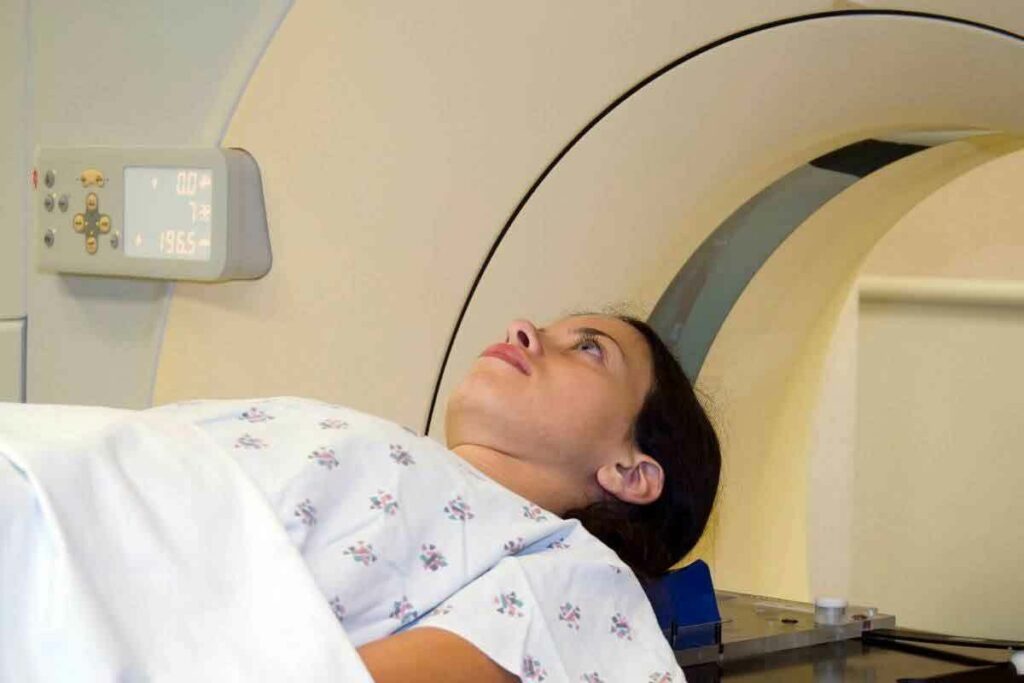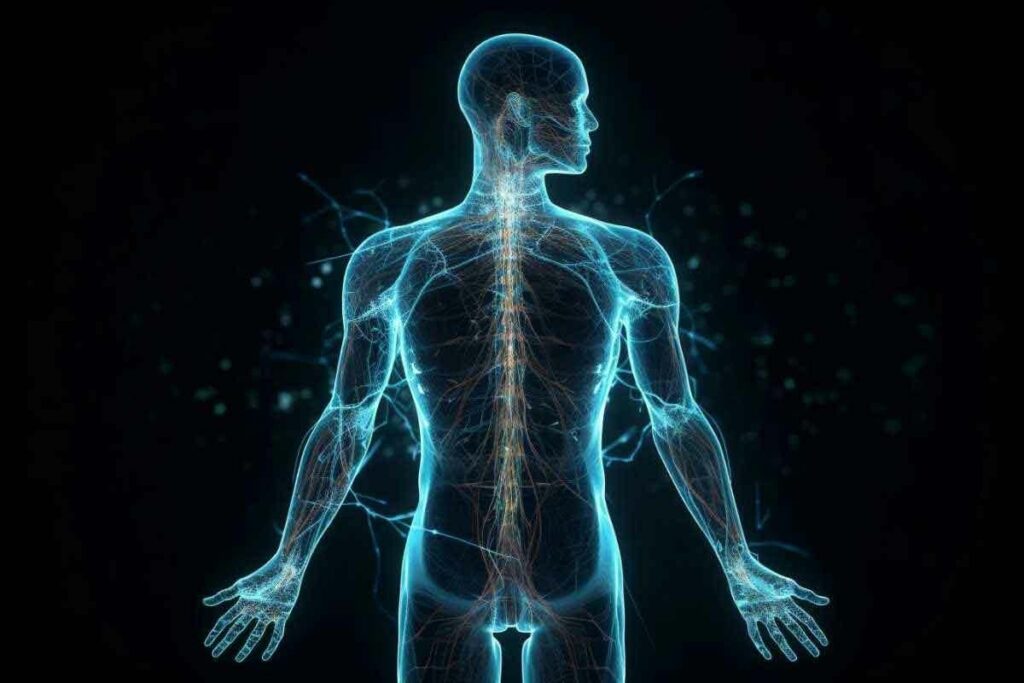
At Liv Hospital, we focus on keeping you safe by providing all the details you need for aftercare. After a PET scan, it’s important to follow certain precautions after a PET scan to safely remove radioactive tracers from your body. We ensure you understand these essential steps for your safety and well-being.
A PET scan uses a mildly radioactive liquid to show active body areas. To reduce risks, you need to take some precautions. Drink plenty of water for hours after your scan to help get rid of the tracer. Also, stay away from young kids and pregnant women for a while.

PET scans are a powerful tool in healthcare. They let doctors see how the body works at a detailed level. This is very helpful in finding and treating cancer, as changes in metabolism often show up before physical signs do.
A small amount of radioactive tracer is injected during a PET scan. Then, a PET scanner picks up the tracer’s activity. This creates detailed images of the body’s metabolic processes.
Radioactive tracers are key in PET imaging. They build up in areas with high activity, like diseased tissues. The most used tracer is FDG (Fluorodeoxyglucose), which cells take up based on their glucose use.
Tracers in PET scans help spot cancer early and accurately. They show where cancerous tissues are by highlighting abnormal activity. This is a big plus in cancer diagnosis and treatment planning.
PET scans are very useful in cancer detection. They give detailed info on the disease’s spread and activity. This is key for accurate cancer staging and treatment planning. PET scans have several key advantages, including:
These benefits help doctors create better treatment plans. This leads to better patient outcomes. The advantages of PET scans in cancer care show their vital role in diagnosis.

PET scans use radioactive tracers to show how your body works. These tracers go to areas that are very active, like cancer cells. This helps doctors find and check health problems.
There are many kinds of radioactive tracers for PET scans. The most common is Fluorodeoxyglucose (FDG). It’s a sugar molecule with a radioactive part. FDG finds areas that use a lot of sugar, like tumors.
Other tracers focus on the heart, brain, and other organs. They are made to find specific activities in the body.
| Tracer | Application |
| Fluorodeoxyglucose (FDG) | Cancer detection, assessing metabolic activity |
| Rubidium-82 | Myocardial perfusion imaging |
| Oxygen-15 | Brain and tumor imaging |
The half-life of a radioactive material is how long it takes to lose half its radioactivity. PET scan tracers have short half-lives, from minutes to hours. For example, FDG has a half-life of about 110 minutes.
This short half-life means the material decays fast. This reduces the time you’re exposed to radiation.
“The short half-life of PET tracers is a significant advantage, as it allows for diagnostic imaging with minimal prolonged radiation exposure.” -A Nuclear Medicine Specialist
After a PET scan, the tracers leave your body in different ways. The main way is through the urinary system, in your urine. Drinking water helps get rid of them faster. Some tracers also leave through feces and sweat.
Knowing how radioactive materials work in your body and how they leave can ease worries about PET scans. By following safety steps and drinking water, you can reduce radiation exposure and recover safely.
After a PET scan, it’s important to follow key precautions. These steps help keep you and others safe from radiation. They also make sure the tracer is removed from your body.
Right after your PET scan, there are important steps to take. Drinking plenty of fluids is a must. It helps get rid of the radioactive tracer. Try to drink 6-8 glasses of water in the first 24 hours.
Also, consider these tips:
The time you need to follow these safety steps depends on the tracer used. Most tracers lose their radioactivity fast. For example, Fluorine-18 (FDG), a common tracer, has a half-life of about 110 minutes.
| Tracer Type | Half-life | Recommended Precaution Duration |
| Fluorine-18 (FDG) | 110 minutes | 4-6 hours |
| Other Tracers | Varies | As advised by your healthcare provider |
Following these precautions is key to keep others safe from radiation. It’s also important for removing the tracer from your body. This ensures your safety and well-being.
By following these guidelines, you help in your recovery. You also keep those around you safe. If you have questions, always talk to your healthcare provider for advice.
Drinking water is key to getting rid of radioactive tracers after a PET scan. It helps your body get rid of the tracer used in the scan. This reduces the chance of being exposed to it for too long.
We suggest you drink more water after a PET scan. Aim for 8-10 glasses a day, unless your doctor tells you differently. Drinking water helps get rid of the tracer and keeps your body working well.
| Time Frame | Recommended Water Intake |
| First 24 hours | 8-10 glasses |
| Next 48 hours | 6-8 glasses |
Drinking water helps your kidneys work better and makes you pee more. The tracer in PET scans goes out through urine. So, drinking water helps spread out the tracer and get it out faster.
“Adequate hydration is key for getting rid of radioactive tracers. Patients should drink lots of fluids after a PET scan.”
Watch how your urine looks and how you feel to see if you’re drinking enough water. Urine that’s pale yellow or clear means you’re hydrated. If you feel dizzy or really thirsty, you might need to drink more.
By focusing on drinking water, you help your body get rid of the tracer safely after a PET scan. Always listen to what your healthcare team says for the best care.
To keep pregnant women, children, and infants safe, those who have had a PET scan must follow certain rules. These rules are in place because the radioactive tracers in PET scans can expose others to radiation. This is a big concern for those who are more at risk.
Pregnant women are extra careful about avoiding radiation because it could harm their unborn babies. People who have had a PET scan should avoid close contact with pregnant women. This means staying away from them and not touching them too much.
Children and infants are also at risk because their bodies are growing and are more sensitive to radiation. To keep them safe, patients should limit their interactions with young kids and babies. This includes not hugging them or sharing food and drinks.
The time patients need to stay away from vulnerable individuals varies. It depends on the PET scan type and the radioactive tracer used. Usually, it’s a few hours to a couple of days. Always follow the advice from your healthcare provider, as it’s based on your specific situation.
By sticking to these guidelines, patients can greatly lower the risk of radiation exposure for those around them. This makes a safer space for everyone.
PET scans are very useful for doctors to diagnose diseases. But, they use radioactive materials, which can be harmful. Even so, the benefits of PET scans often make them worth the risks.
A PET scan’s radiation dose is quite low. It’s about 7 millisieverts (mSv). This is less than the 3 mSv of background radiation we get each year from nature.
| Radiation Source | Effective Dose (mSv) |
| PET Scan | 7 |
| Annual Background Radiation | 3 |
| Chest X-ray | 0.1 |
Knowing these numbers can ease worries about PET scans. The body also quickly gets rid of the radioactive tracers, making exposure even shorter.
It’s important to know the difference between short-term and long-term effects of PET scan radiation. Short-term effects are usually minor, with no immediate harm. But there’s debate about long-term risks, like a small chance of cancer.
Even so, the benefits of a PET scan often outweigh the risks, which is why they’re used for serious conditions. It’s key to follow post-scan precautions and follow guidelines to reduce exposure.
Many studies have looked into PET scan safety and effectiveness. Doctors agree that PET scans are safe and valuable when used correctly.
Key Findings:
As medical imaging technology gets better, PET scans will likely become even safer and more effective. For now, the evidence supports their use in diagnosing diseases.
Knowing about PET scan side effects can make your recovery easier. PET scans are usually safe, but some people might react to the tracer used. This reaction is rare but can happen.
Most people do fine with PET scans, but some might feel a bit off. You might feel:
These feelings usually go away quickly. But it’s important to watch how you feel.
Some people might be allergic to the tracer. Signs of an allergy include:
If you see these signs, get help right away.
If you feel really bad or different after your scan, call your doctor. Here’s what to do in certain situations:
| Symptom | Action |
| Severe allergic reactions | Seek immediate medical attention |
| Mild side effects persisting | Contact your healthcare provider for guidance |
| Unusual or concerning symptoms | Consult your healthcare team |
Being aware of these side effects and knowing when to ask for help can make your recovery smoother.
To lower the risk of radiation, it’s key to follow good bathroom hygiene and waste disposal after a PET scan. We suggest patients stick to certain rules to keep themselves and others safe.
After a PET scan, it’s important to handle waste with care. Flush the toilet twice after use to get rid of radioactive tracers. Also, wash your hands well with soap and water after using the bathroom.
It’s also vital to clean more thoroughly. Patients should clean the toilet seat, handle, and areas around it with a disinfectant for at least 24 hours after the PET scan. This step helps lower the risk of radiation exposure to others.
The length of these extra hygiene steps depends on the radioactive tracer’s half-life. Usually, we tell patients to keep up these habits for at least 48 hours after the scan. But, this time might change based on the tracer and the patient’s situation.
By sticking to these bathroom hygiene and waste management rules, patients can greatly cut down radiation exposure risks for themselves and others. We stress the need to follow these guidelines for a safe recovery.
To help get rid of radioactive tracers and feel better after a PET scan, some diet and lifestyle changes are suggested. These tips are made to help you recover smoothly and safely.
It’s important to eat foods that help remove radioactive tracers from your body after a PET scan. Hydrating foods and those full of antioxidants are great. Make sure to eat lots of fruits, vegetables, and whole grains. Foods high in fiber also help with getting rid of these tracers.
Some foods that can help include:
| Food Category | Examples | Benefits |
| Fruits | Oranges, grapefruits, berries | High in vitamin C, antioxidants |
| Vegetables | Spinach, kale, broccoli | Rich in antioxidants, fiber |
| Whole Grains | Brown rice, whole wheat bread | High in fiber, aids elimination |
Doing some light exercise can help your body get rid of radioactive tracers. Light exercise like walking or yoga is good. But, stay away from hard activities that could hurt you or make you tired.
Here’s what to do:
Getting enough rest and sleep is key to recovering after a PET scan. Make sure to get plenty of sleep and let your body heal. Don’t push yourself too hard and rest when you need to.
To sleep better:
By following these diet and activity tips, you can help your body recover after a PET scan. This ensures the safe removal of radioactive tracers.
After your PET scan, it’s key to keep talking with your healthcare team. Follow-up care is vital for your recovery. It helps you get the right guidance and support.
Post-scan appointments are very important. They let you talk about your PET scan results with your doctor. Your healthcare team can:
To get the most from your post-scan appointment, write down questions to ask your doctor.
When you meet with your healthcare team, ask these questions:
| Category | Sample Questions |
| Scan Results | What do my scan results indicate about my current health status? |
| Treatment Options | What are my treatment options based on the scan results? |
| Recovery Process | What can I expect during my recovery, and how can I manage any side effects? |
Keeping a record of your recovery is very helpful. Writing down your symptoms, side effects, and progress helps your healthcare team. They can give you more specific advice and support.
Tips for Effective Documentation:
By focusing on follow-up care and keeping in touch with your healthcare team, you can have a smoother recovery. This leads to better health outcomes.
After a PET scan, it’s key to follow the recommended precautions. This helps ensure a safe recovery and makes the most of the scan’s benefits. By knowing and following these guidelines, patients can reduce risks and get the best results.
At Liv Hospital, we stress the need for proper care after a PET scan. This includes staying hydrated, limiting social contact, and practicing good hygiene. These steps help keep patients safe and protect those around them.
By focusing on safe recovery and getting the most from the scan, patients can feel confident during the post-scan process. At Liv Hospital, we’re dedicated to giving our patients the care and support they need. We aim to help them reach their health goals.
After a PET scan, drink lots of water. Also, follow good bathroom hygiene. Try to avoid being close to pregnant women, kids, and babies to reduce radiation risk.
You should follow safety rules for 24 to 48 hours after the scan. This helps keep you and others safe.
PET scans are mostly safe. But, there’s a small risk of radiation exposure and allergic reactions to the tracer.
To lower radiation risk, keep your bathroom clean. Avoid being too close to people who are vulnerable. Drinking water helps get rid of the tracer.
Drink lots of water to get rid of the tracer. Aim for 8-10 glasses a day. This helps your body recover.
Yes, you can start doing normal things again. But be careful not to overexert yourself. Follow any food advice your doctor gives you.
Stay away from pregnant women, kids, and babies for 24 to 48 hours. This reduces radiation exposure.
Look out for hives, itching, swelling, or trouble breathing. If you see these signs, get help right away.
To keep radiation low, follow good bathroom habits. Flush twice and wash your hands well.
There’s no special diet needed. But eating fruits and veggies helps. Drinking water also supports your recovery.
Getting follow-up care is key. It helps you get the support you need, answers questions, and reviews your scan results.
Ask about your scan results, any next steps, and how to handle side effects. Your healthcare team can guide you.
Subscribe to our e-newsletter to stay informed about the latest innovations in the world of health and exclusive offers!
WhatsApp us